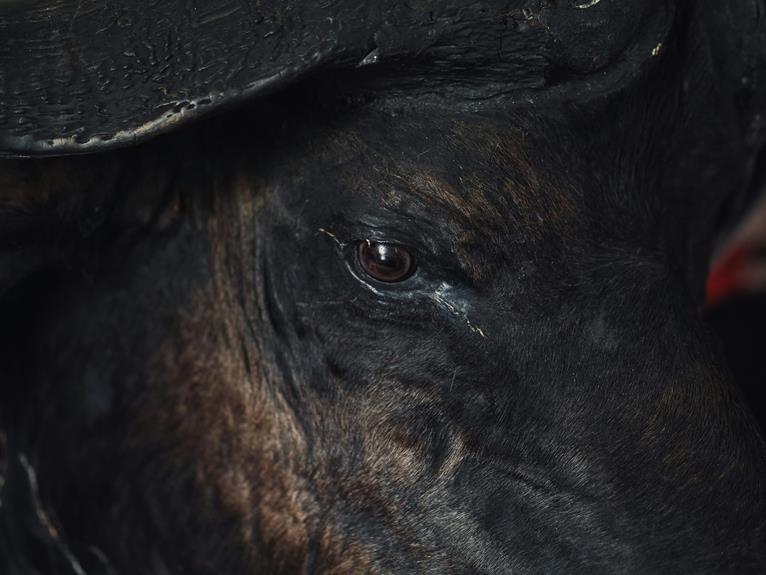
If your dog is excessively barking, chewing things, sticking close, or seems restless when you head out, these could be signs of separation anxiety. It's essential to pay attention to these behaviors and understand the reasons behind them to help your furry friend feel more secure when you're not around.
Behavioral Changes
If your dog displays sudden behavioral changes such as excessive barking or destructive chewing when you're away, it could be a sign of separation anxiety. These behaviors are often triggered by the stress and fear of being separated from their owner. Your furry friend may become more clingy and follow you around the house more than usual. They might also show signs of distress right before you leave, such as pacing, whining, or even trying to prevent you from leaving.
Moreover, your dog may exhibit signs of restlessness or an inability to settle down when left alone. This could manifest as constant pacing, panting, or drooling excessively. Some dogs may even try to escape by digging or scratching at doors and windows. If your dog starts having accidents inside the house despite being house-trained, it could be due to the anxiety they experience when left alone. Understanding these behavioral changes is essential in identifying and addressing separation anxiety in your beloved pet.
Physical Symptoms
When your dog experiences separation anxiety, they may exhibit physical symptoms that are indicative of their distress. These physical signs can manifest in various ways, such as excessive drooling, panting, or trembling. You might notice that your dog paces back and forth, whines, or barks excessively when you're about to leave or have already left. Some dogs may even engage in repetitive behaviors like circling or self-grooming excessively.
Another common physical symptom of separation anxiety in dogs is destructive behavior, which will be discussed in more detail in the next section. However, it's important to note that destructive actions like chewing furniture or belongings can also be an outward sign of the inner turmoil your dog is experiencing.
Additionally, some dogs may experience changes in their eating habits when dealing with separation anxiety. They might refuse to eat or drink while you're away or overeat due to stress. Keep an eye out for any sudden changes in your dog's appetite as it could be a red flag for separation anxiety.
Destructive Actions
Your dog may exhibit destructive actions as a clear indication of their separation anxiety distress. When you leave your dog alone, they might engage in behaviors like chewing on furniture, shoes, or other items they wouldn't normally destroy. This destructive behavior is often a result of your dog feeling anxious or stressed when separated from you. It's their way of coping with the separation and the emotions they're experiencing.
Common signs of destructive actions due to separation anxiety include scratches on doors or windows, torn-up pillows or cushions, and bite marks on objects. Your dog might focus their destructive behavior on items that carry your scent, seeking comfort in your presence even when you're not there. Understanding that these actions stem from anxiety can help you address the root cause rather than just the symptoms.
To help alleviate your dog's destructive tendencies, consider providing interactive toys or puzzles to keep them occupied while you're away. Additionally, implementing a consistent routine before leaving can help reduce your dog's anxiety and minimize destructive behaviors.
Excessive Vocalization
Excessive vocalization in dogs can be a prominent sign of separation anxiety, often manifesting as persistent barking or howling. When you leave your dog alone, they may start vocalizing excessively as a way to express their distress. This can be continuous or occur intermittently throughout the time you're away. Your neighbors may even complain about the noise if it becomes a frequent issue.
The excessive barking or howling is your dog's way of trying to communicate their anxiety and seek your attention. They may feel anxious or scared when separated from you, and vocalization is their way of coping with these emotions. If left unaddressed, this behavior can escalate and become a chronic problem.
To help manage excessive vocalization due to separation anxiety, it's essential to work on desensitization training and gradually accustom your dog to being alone. Providing engaging toys, creating a safe space, and using positive reinforcement techniques can also aid in reducing their vocalization when you're not around.
Conclusion
If you notice your dog exhibiting behaviors like excessive barking, destructive actions, or physical symptoms like pacing or drooling when you leave, they may be experiencing separation anxiety.
It's important to consult with a veterinarian or animal behaviorist to address these symptoms and provide your furry friend with the help and support they need to feel more comfortable and secure when you're not around.




